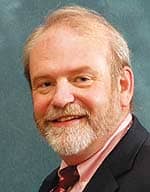The molybdenum-99 shortage continues to impact nuclear medicine, molecular imaging, and, most of all, patients.
When it rains, it pours. A ?perfect storm? has been brewing?and threatens to take the medical imaging community on a tumultuous ride. Three shortages are currently creating havoc: 1) the medical isotope shortage, 2) decreasing availability of alternative imaging agents, and 3) job shortages directly linked to fewer imaging tests. These circumstances are aggravating the situation?and ultimately, the ones losing the most are patients.
The Medical Isotope Shortage

Robert W. Atcher, PhD, MBA

Michael M. Graham, PhD, MD

Jeffrey P. Norenberg, PharmD, MS
Shutdowns of the reactors that produce the world?s supply of molybdenum-99 (Mo-99)?a critical medical isotope that yields technetium-99m (Tc-99m), which is used for the diagnosis of more than 16 million patients in the United States each year?continue to cause significant supply problems for the US imaging community. Mo-99 is produced at only five major reactors in the world?none of which is located in the United States. Because of its half-life and rapid decay, Mo-99 cannot be stockpiled. Additionally, cross-border transportation issues lead to supply chain issues?meaning that in many cases, the radiopharmaceuticals never make it to hospitals for patient procedures. The recent transportation interruptions generated by the volcano that erupted in Iceland highlight this problem.
While these reactors have an average age of 48 years and go offline for regularly scheduled maintenance, unanticipated interruptions at these facilities compound problems in the supply chain and in the eventual care of patients. For example, the HFR reactor at Petten in the Netherlands went offline February 19 and is expected to be down through August. Making matters worse, the NRU reactor in Chalk River, Canada, has been offline to repair leaks for more than a year and AECL, the operator of the reactor, keeps pushing back the restart date. Combined, the HFR and NRU reactors normally account for more than 90% of the Mo-99 supply to the United States.
Approximately 80% of all nuclear medicine procedures use Tc-99m to diagnose heart disease, cancer, and neurological conditions. Interruptions in supply cause shortages of the needed radiopharmaceuticals, leading to rescheduled or canceled tests for patients. Our greatest concern is that patients will not receive the vital tests they need to detect and treat life-threatening diseases at the earliest possible stage. Delayed testing and treatment put patients at unnecessary risk?a burden that the entire nuclear medicine community is shouldering.
The American Medical Isotopes Production Act of 2009 (HR 3276), introduced by Rep Edward J. Markey (D-Mass) in July 2009, will reduce our dependence on foreign sources by establishing a domestic supply of medical isotopes. The Society of Nuclear Medicine continues to urge the Senate to pass this important piece of legislation. Passage of this bill will begin to establish a domestic production capability. However, it will not solve the current crisis.
Running Out of Solutions
The nuclear medicine community has had to scramble to find ways to cope with the shortage and ensure patients receive the best care possible. To compensate, hospitals and imaging centers are coordinating their schedules according to when Tc-99m is available and delaying or even canceling tests. Patient scheduling becomes a juggling act, but it is important that patients receive these life-saving tests without delay to diagnose and monitor their disease.
When Tc-99m is simply not available, providers are left with no option other than to use alternative imaging studies that are more expensive, more invasive, or less accurate or may result in increased radiation doses to patients. Worse, often the alternative involves a combination of these factors, compromising patient care.
The Threat to Jobs
In a relatively short period of time, the isotope shortage has evolved from a theoretical threat to one that is very real. Beyond the direct impact of this shortage on patient access to these standard-of-care imaging procedures, it is now severely affecting nuclear medicine professionals. Without Mo-99, fewer technologists are needed to perform tests, and facilities across the country are furloughing or laying off staff. Additionally, the Centers for Medicare and Medicaid Services has been gradually reducing reimbursement for these tests?and even more cuts to reimbursement loom on the horizon. Together, these now jeopardize nuclear medicine workforce development, as evidenced by the declining enrollment in education and training programs and the closure of others. The lasting impact of the decline in enrollment and access to education and training programs is also a cause of concern.
Unfortunately, this is becoming a vicious downward cycle, and patients?especially America?s senior citizens?are the ones who are losing access to these life-saving tests.
Michael M. Graham, PhD, MD, is president of the Society of Nuclear Medicine (SNM) based in Reston, Va. Robert W. Atcher, PhD, MBA, is immediate past president of SNM and chair of the SNM Medical Isotope Task Force. Jeffrey P. Norenberg, PharmD, MS, is an SNM director-at-large, chair of the SNM Commission on Radiopharmaceuticals, and a member of the SNM Medical Isotope Task Force. Visit for more information.




